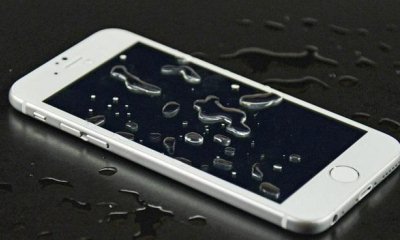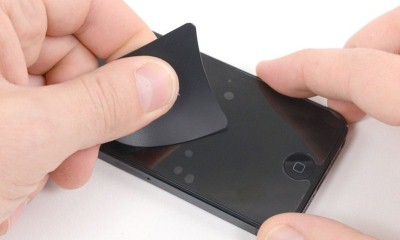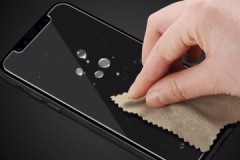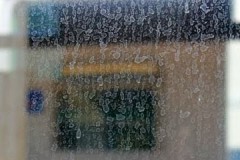Several life hacks on how to remove water from under the protective glass of a phone or smartphone
 Water caught under the protective glass spoils the appearance of the smartphone. Normally it shouldn't be there.
Water caught under the protective glass spoils the appearance of the smartphone. Normally it shouldn't be there.
The display is the main working area of modern gadgets, the presence of moisture on it can hinder the operation of the sensor.
Read about how to remove water from under the protective glass and not spoil your smartphone in the article.
Content
Can moisture be removed?
You can remove water from under the protective glass on your own... To solve this problem, you do not have to hand over the gadget to the master, or buy a new screen.
You should not walk with a stained smartphone, especially since the procedure for cleaning it is simple and does not require special skills.
How to get rid of drops that have gotten under the film?
 The first way to remove water is by force. Implementation guide:
The first way to remove water is by force. Implementation guide:
- Place the device on a flat surface.
- Using the back of a bank card, the water is driven to the edge of the glass and squeezed out.
- Do not press hard on the screen to avoid damaging the sensor.
Sometimes the moisture on the screen looks like an oily spot. Getting rid of it is even easier. It is enough to use any suction cup that is in the house. It is placed on the edge of the spot and pulled sharply up.
If it has not disappeared the first time, the procedure is repeated... The effectiveness of the method can be enhanced by combining it with heating the device with a hair dryer.
To make it easier to use the suction cup, a key ring is threaded into it. This will allow you to stick your finger inside and act more actively.
Sometimes water gets inside due to incorrect installation of the glass. Installation errors are eliminated as follows:
- using a needle, gently pick up the edge of the protection and raise it;
- the capture must be carried out from the side that is closest to the bubble;
- a finger is carried over the accumulated water, squeezing it out;
- the glass is lowered into place, pressing it to firmly adhere to the screen.
You can try to evaporate small droplets of water only with a hair dryer. It is turned on at medium power, and the air flow is directed to the glass. The heat will evaporate the water. The average duration of the procedure is 10 minutes.Before using the hair dryer, the battery must be removed from the smartphone.
If moisture gets not only under the glass, but also inside the smartphone, it is taken apartremove all visible water with soft matter. The device is then placed in a jar filled with rice and left overnight. This time should be enough for the cereal to absorb the liquid.
If you do nothing, will the liquid evaporate?
If there is very little water under the glass, then it can evaporate on its own. However, with normal use of the gadget, this process will take a long time. You can speed it up using any game downloaded to your smartphone. In active mode, the smartphone will heat up, which will lead to evaporation of moisture.
Helpful information
Tips with which you can quickly and accurately remove water from under the protective glass:
-
 If you decide to use a hairdryer, you cannot turn it on at full power.
If you decide to use a hairdryer, you cannot turn it on at full power.Be sure to control the degree of heating of the screen. The temperature should not exceed 50 degrees. If you have time, it is better to use a cold blower.
- Do not put your smartphone on a windowsill in direct sunlight. This could cause the battery to explode and melt the plastic parts.
- When peeling off the protective glass, you need to make sure that the surface under it is perfectly clean. Otherwise, a tight seal cannot be achieved.
- Remove protection from the smartphone by carefully prying it around the perimeter. If the spot is in the center, the movements should be forward. A sudden tearing off of the glass can break the screen. The risk increases if there are microcracks on it.
- It is not recommended to put the gadget on the battery, as this can lead to its damage.
Are you wondering how to remove various dirt from glass? Take a look at this section!
Conclusion
Leaving water under a protective glass is not recommended, especially since it is easy to remove it, just a little effort is enough. To solve this problem, both mechanical and thermal methods of exposure are suitable. The main thing is not to overheat the device and not to violate the instructions.



